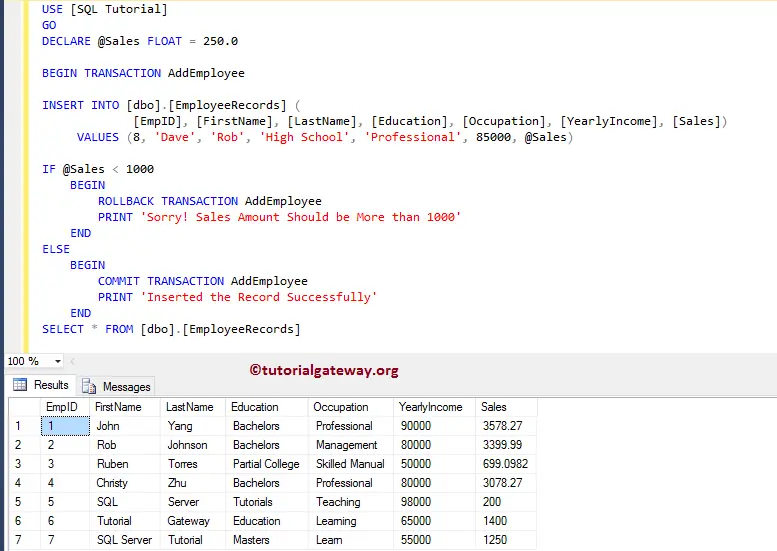



The reason for this relates to how and when space in the log is made available for reuse, a process known as log truncation.
#SQL TRANSACTION SERIES#
Unitrends Related ArticlesAdministrator Guide for Recovery Series and Unitrends Backup 10.1 Įxternal Related ArticlesBackup Under the Bulk-Logged Recovery Model
#SQL TRANSACTION FULL#
Unitrends VSS SQL agent: In the FULL Recovery Model, schedule a Full and Transaction Log backups.Unitrends vProtect application-aware backup: Change every database model to SIMPLE.Not Supported: BULKED LOGGED recovery model, as per Microsoft Best Practices. (For example, importing new labels, copying data from one table to another, or creating an index.)įrom TechNet dd822915: "So, while you can get performance improvements when switching to the BULK_LOGGED recovery model, you must consider changing to it as a temporary operation-just to improve your batch process and once the batch process is complete, you should switch back to FULL and perform a log backup as soon as possible."From Microsoft SQL 2008 Documentation: "The bulk-logged recovery model is a special-purpose recovery model that should be used only intermittently to improve the performance of certain large-scale bulk operations, such as bulk imports of large amounts of data." Run a log backup while the database is still in full recovery model. For compliance with Unitrends best practices, perform the following steps: Unitrends does not support log backups while a database is in the bulk-logged recovery model because they are unnecessarily large (see Administrator Guide page 502). The SQL bulk-logged recovery model is used as a temporary recovery model to enhance performance when running bulk jobs. Recommendations for Bulk-logged Recovery Model NOTE: File level master backups will not truncate SQL transaction logs. In the absence of transactional log backups, the log file simply continues to grow in size, unchecked.

It is important to schedule transactional log backups of of any database running in th FULL recovery model because this is the only operation that makes space available for reuse. Each time a SQL TRANSACTION LOG backup operation occurs, any unnecessary segments are marked as inactive and reusable. Once a SQL FULL backup of the database has been taken, the inactive segments of the log are no longer marked as reusable on checkpoints, so records in the inactive segments are retained alongside those in the active segments to maintain a complete, unbroken series of log records, which can be captured in log backups for use in point-in-time restore operations. As a result, the space in inactive segments of the log is continually overwritten with new log records. The space in any segment becomes inactive as a result and is made available for reuse. Pages in the data cache are first written to the log file and then flushed to disk. Truncation can take place immediately upon occurrence of a checkpoint operation. If you do not run Unitrends transactional log backups, be sure the database recovery model is SIMPLE to prevent the transactional log files from growing unchecked. It is important to schedule regular transactional log backups when using any recovery model other than SIMPLE to control the growth of the transactional log file. log truncation) with different SQL database models when using a Unitrends backup system. In the absence of SQL Transaction log backups, the database log file will continue to grow in size, uncheckedĮxplain the transactional log files' growth behavior and log space reuse (a.k.a. In the absence of SQL Transaction log backups, the database log file will continue to grow in size, unchecked - Connect IT Community | Kaseya


 0 kommentar(er)
0 kommentar(er)
